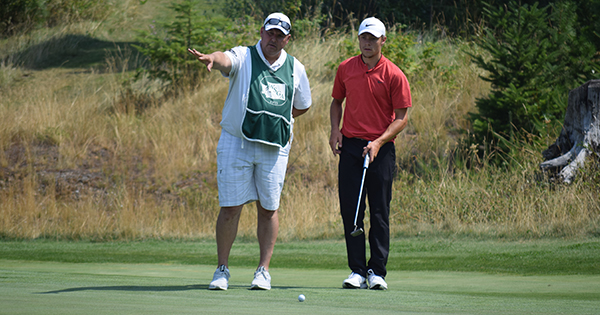The USGA and R&A have published the finalized interpretation on the use of green-reading materials in golf, which take effect on Jan. 1, 2019.
The new interpretation of Rule 4.3 (Use of Equipment) has been introduced following a six-week feedback period. It reaffirms the governing bodies’ view that the ability of golfers to read greens using their own judgment is an essential skill that should be maintained, and defines how such materials may be used.

The interpretation limits the size and scale of detailed putting-green maps and any similar electronic or digital materials that a player may use during a round to assist with reading his or her line of play on the putting green.
“These latest modifications provide very practical changes that make the interpretation easier to understand and apply in the field,” said Thomas Pagel, USGA senior managing director of Governance. “We’re thankful for everyone’s willingness to provide feedback as we worked through the process of identifying a clear interpretation that protects the essential skill of reading a green, while still allowing for information that helps golfers enjoy the game.”
David Rickman, executive director of Governance at the R&A said, “We received some extremely useful feedback over the last six weeks that helped us finalize the limits. It is important that we take steps to ensure that skill and judgment are the main determinants of success in reading the greens. The new interpretation is a first step in the process and we will keep green-reading materials under review in 2019 to assess whether any further action is required.”
Golfers may continue to use a putting-green map or other putting-green information, except that:
- Any image of a putting green must be limited to a scale of 3/8 inch to 5 yards (1:480) or smaller (the “scale limit”).
- Any book or other paper containing a map or image of a putting green must not be larger than 4 ¼ inches x 7 inches (the “size limit”), although a “hole location sheet” that displays nine or more holes on a single sheet of paper may be larger, provided that any image of a single putting green meets the scale limit.
- No magnification of putting-green information is allowed other than a player’s normal wearing of prescription glasses or lenses.
- Hand-drawn or written information about a putting green is only allowed if contained in a book or paper meeting the size limit and written by the player and/or his or her caddie.
The final interpretation also clearly defines that any use of electronic or digital putting-green maps must comply with the same limits. A player is still in breach of Rule 4.3 if the player uses any device not consistent with the purpose of the limits, including:
- Increasing the size of the green’s representation beyond the scale or size limits.
- Producing a recommended line of play based on the location (or estimated location) of the player’s ball (see Rule 4.3a(1)).
Some of the changes made to the original proposal following the feedback period include the removal of: (1) the proposed minimum slope indication limit of 4% and (2) the prohibition against using handwritten notes to create a copy or facsimile of a detailed green map.
Additions to the original proposal include: (1) a new size limit for the printed book/material (restricted to pocket-size), (2) a new prohibition against magnification of putting green information and (3) a new requirement that that any hand-drawn or written information must be in a book or on a paper meeting the size limit and must be written by the player and/or his or her caddie.
The USGA and R&A will continue to evaluate the future development and use of green-reading materials, as they ascertain the impact of the new interpretation to see if further modifications are necessary.
For more information about the new Rules of Golf please visit www.usga.org or www.randa.org.
After a six-week feedback period, limitations on the use of green-reading materials, which go into effect Jan. 1, have been finalized. https://t.co/92pOp2S7dH
— USGA (@USGA) October 15, 2018
